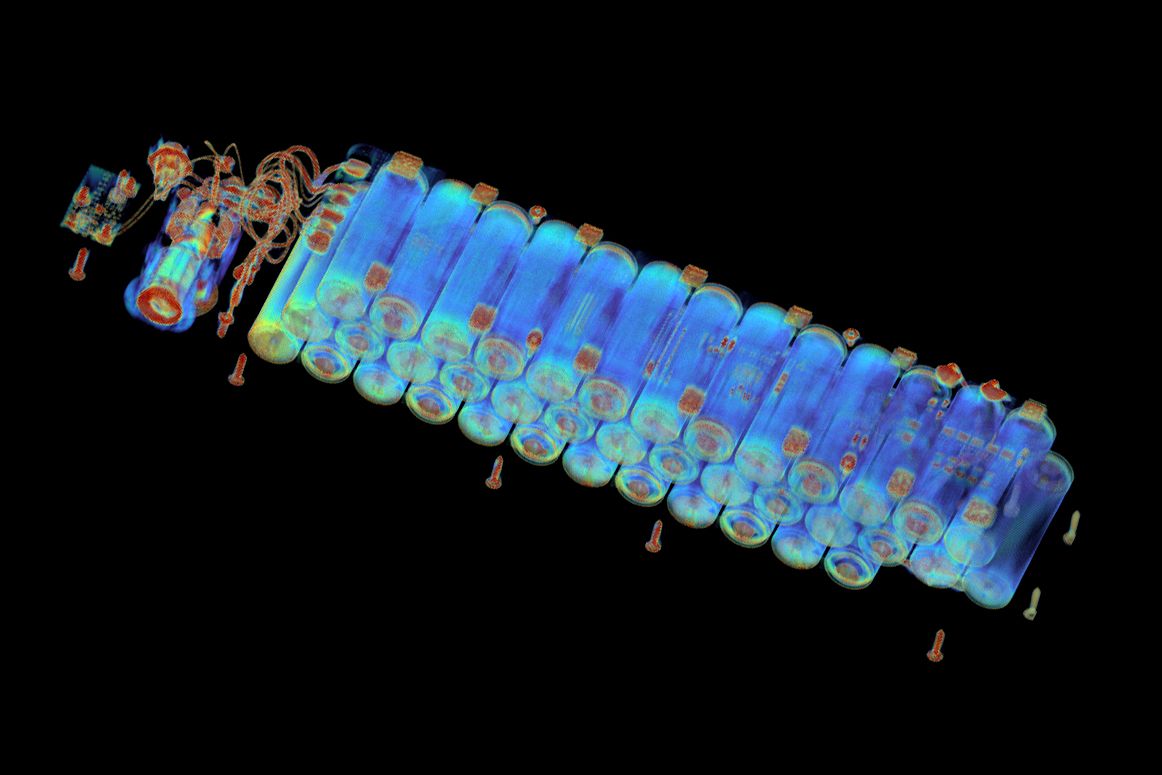A groundbreaking X-ray study of over 1,000 lithium-ion batteries has exposed alarming safety gaps between brand-name cells and cheap alternatives flooding online marketplaces. Lumafield's industrial CT scanners found dangerous manufacturing defects in 8% of low-cost batteries that could trigger fires and explosions, while zero premium batteries from Samsung and Panasonic showed problems.
Lumafield just delivered a wake-up call to anyone buying batteries online. The company's comprehensive X-ray study of lithium-ion batteries reveals what's hiding inside those suspiciously cheap cells flooding marketplaces like Amazon and Temu - and it's not pretty.
Using industrial computed tomography scanners that peer inside objects with X-rays, Lumafield dissected 1,054 18650 lithium-ion battery cells from ten different brands. These aren't niche components - they power everything from electric toothbrushes and power tools to e-bikes and even some electric cars.
The results paint a stark picture of quality control. Of the 33 batteries found with serious manufacturing defects, every single one came from the 424 cells sold by low-cost or counterfeit brands. Meanwhile, premium batteries from Samsung, Panasonic, and other established manufacturers showed zero problems.
"We found dangerous manufacturing defects in low-cost and counterfeit batteries that could potentially lead to fires and explosions," Lumafield reported in their study findings.
The most concerning defect is called negative anode overhang - a manufacturing flaw that "significantly increases the risk of internal short-circuiting and battery fires" while reducing overall battery life. When looking specifically at cheap and counterfeit batteries, there's nearly an 8% chance they'll have this dangerous defect. For two counterfeit brands claiming impossible specifications, that percentage jumps to 12% and 15%.
The counterfeiting problem runs deeper than just safety. Some fake batteries sport pink wrappers designed to mimic Samsung's legitimate 30Q cells. Others make outrageous capacity claims - advertising 9,900 mAh when legitimate 18650 batteries max out around 3,000-3,450 mAh. When Lumafield tested these overinflated claims, the knockoffs delivered less than 1,300 mAh - barely 40% of what brand-name batteries provide.
Beyond the headline-grabbing fire risks, the X-ray analysis revealed systematic quality control failures. Every single battery from low-cost brands showed worse edge alignment of their internal wound layers compared to reputable manufacturers. This shoddy construction increases the likelihood of short circuits and performance degradation over time.











